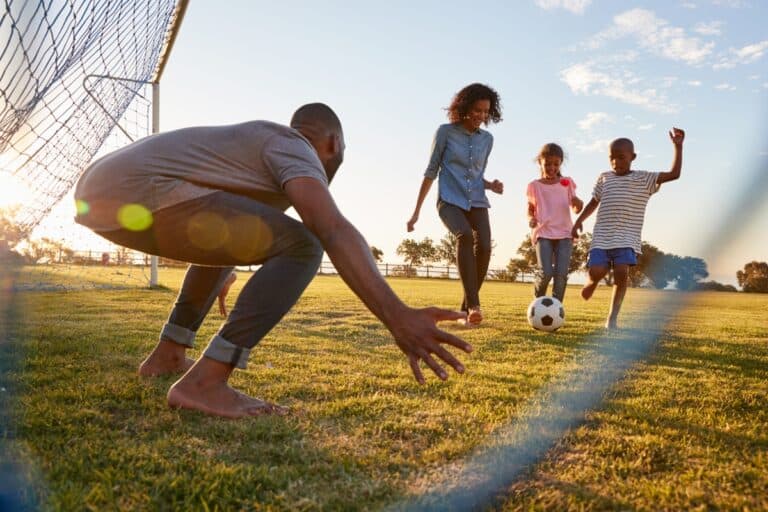How to Pick the Best Booster Seat for Your Child
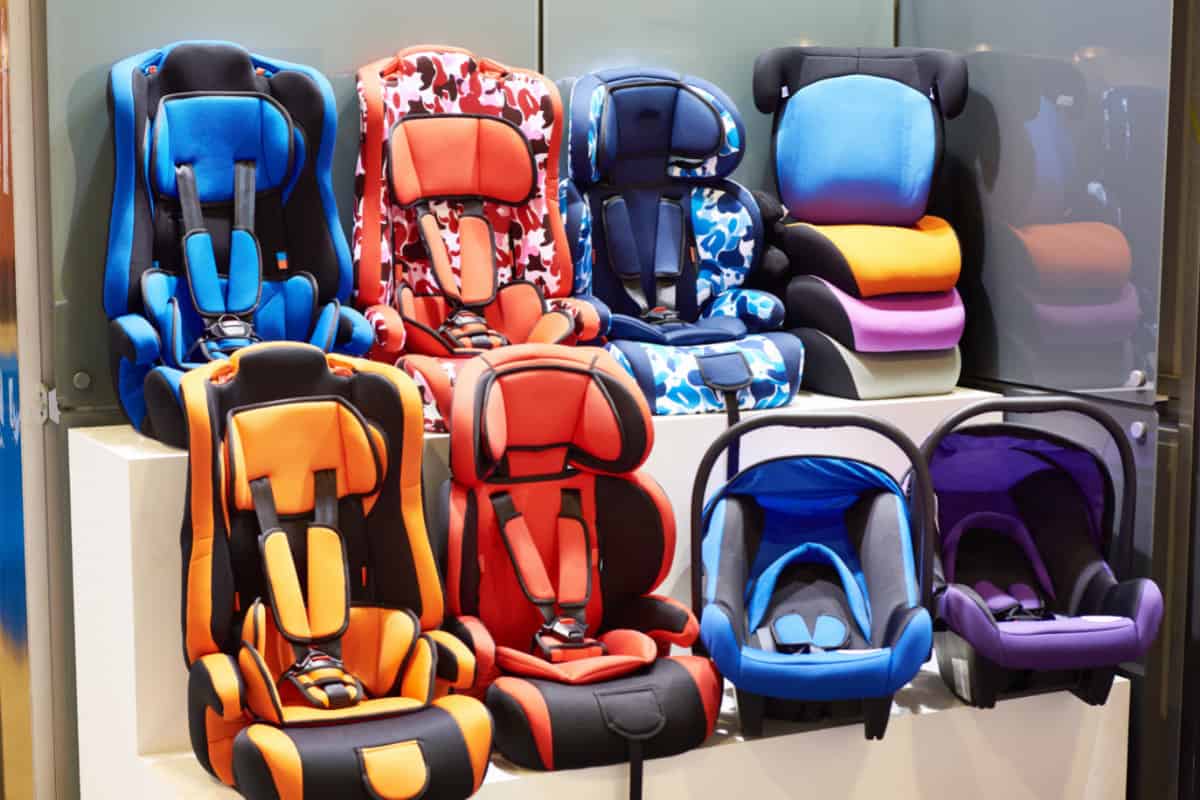
Before you know it, your baby has outgrown their infant seat and has turned into a big kid ready to sit in a booster seat. Read on to learn all about when it’s time to make the transition, and how to make sure your child stays safe in the car.
*As an Amazon affiliate, we may earn from qualifying purchases.
When it’s time to trade in the baby seat for a big kid booster seat worthy of your toddler’s new status, it can be hard to figure out where to start. Parents sometimes spend hours making sure they choose the right infant car seat. However, those same parents sometimes overlook the same steps when choosing a booster seat for their big kid.
This can be a dangerous mistake since big kids who have just outgrown their car seat are not yet at the right height, weight requirements, or age to safely ride with just a shoulder belt.
When it comes to booster seats, there are many different options. Just when parents have figured out the type of car seat their baby likes, they need to get ready to go through the process again for the perfect booster car seat for their toddler to sit in.
With any car safety seat, the most important thing is that your little one, toddler, or big kid stays safe and secure in the event of an accident when on the go. After safety considerations, parents look at ease-of-use and consider whether to go no-frills or look for amenities like built-in cup holders and an armrest. Also, look for machine-washable fabrics if your child is messy or you like feeding your child in the car. Consider upgrades like Cybex’s clip-on SensorSafe that alerts you if you accidentally leave a child in the car. Read on for the best types of boosters and best practices.
When to Use a Booster Seat
It’s essential to understand when it is appropriate to use a booster seat and the different types of car safety seats.
There are infant seats, convertible car seats, high back booster seats, and backless booster seats. Each serves its own purpose. Typically children start out using a rear-facing infant seat then move to a car seat. Only after a little one has outgrown their forward-facing car seat should they move to a big kid booster.
Parents can tell when a child has outgrown their car seat by checking the weight range and height limit for their little one’s car seat when using a harness. This information is in the manual that came with your car seat. If you can’t find the manual, don’t panic! This information is usually also available online. You can also call the customer service number for your car seat’s manufacturer to obtain this information.
Another way to tell if a child has outgrown their car seat and is ready for a booster is to look carefully at how they sit in the seat. Check to see if their shoulders are about the top harness slots of their car seat or if the tops of their ears have reached the top of their car seat. The strap should also not be too tight. Once this happens, it’s time to find somewhere new for your not-so-little one to sit.
Whether a child needs a booster or not, the American Academy of Pediatrics recommends all children under thirteen should only ride in the back seat. This means that you should only use boosters in the rear seat.
Types of Car Seats and Boosters
Baby Gear Expert & Certified CPS Tech Mia Rosenberg from PishPosh Baby shares her advice on the types of car seats and boosters to help parents navigate their choices.
Infant Seats
Infant seats are rear-facing seats for babies 0-2 years of age. It is best to keep the child rear-facing in the backseat all the way up to the seat’s weight limit. These are not booster seats and should never be used for toddlers. The most common type of infant car seat is rear-facing only. In contrast, booster seats are forward-facing only. These are generally used with a LATCH system and have a 5-point harness. Infant seats are often infant carriers because they have handles and can usually fit into a stroller.
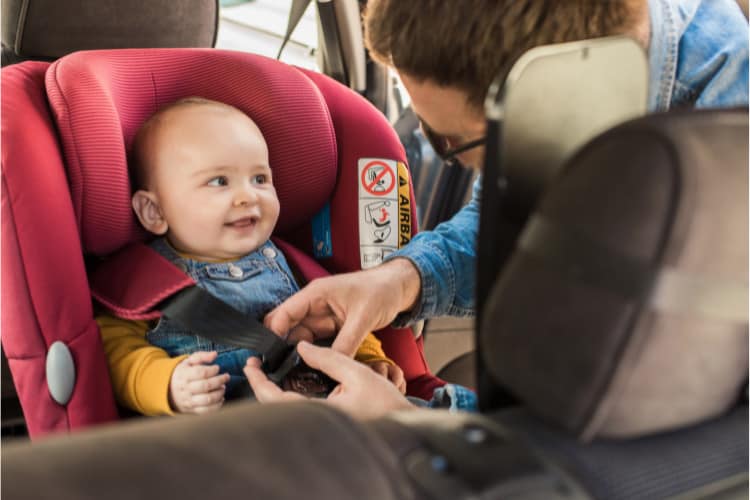
Convertible Car Seats
Convertible car seats are often a good value because children can use them when they are babies, preschoolers, and big kids. They will last for years. However, all child restraint systems have an expiration date, so keep that in mind as your child grows.
These car seats include two distinct types that children can use as booster car seats when the time comes.
3-in-1 Car Seats and Booster Seat
A 3-in-1 car seat is a car seat that can be used in 3 positions. Those positions are rear-facing, forward-facing, and booster mode as a booster seat. Many 3-in-1 seats are newborn-ready. This means that parents use them in a rear-facing position until the baby is at least two years old. After that, parents can change it to forward-facing mode. Once a child is ready for a booster, parents can switch this type of car seat to booster mode by tucking the harness straps away. This is an all-in-one solution for many families.
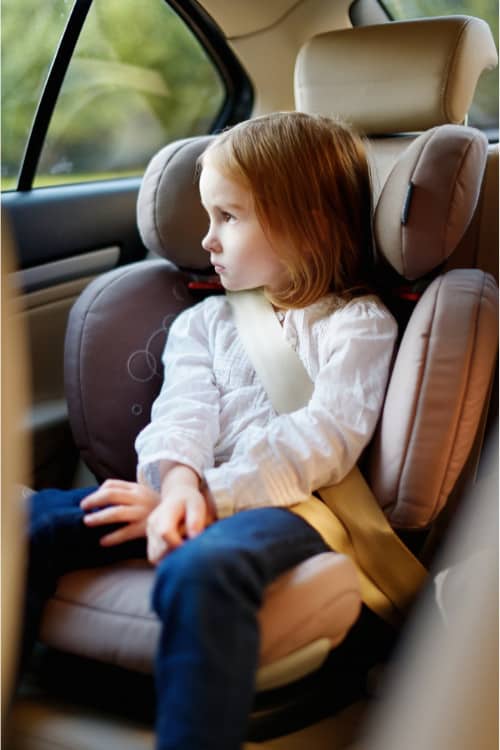
Combination Car Seats and Booster Car Seats
Combination car seats are 2-in-1. Children can only use these while forward-facing. Parents typically use these with 5-point-harness straps and top tether in forward-facing mode. Convertible car seats can be used as booster car seats when a little kid turns into a big kid. These may have higher height and weight limits than other convertible car seats. Combination seats typically have an adjustable headrest to help the booster grow with your child. The Britax Grow With You ClickTight Plus SafeWash Harness-2-Booster Seat is a top-rated 2-in-1 seat.
Check your manual for guidance about when you should switch how you use the seat to make sure you safely use convertible car seats. Height limits and weight limits are the primary factors. These can and do vary between manufacturers. As a general rule, it is safest not to switch your convertible car seat to booster mode until your child has gotten too big to use the car safety seat any other way.
Highback Booster or Backless Booster Seats
A highback booster or a backless booster is used when a child outgrows their convertible seat and no longer needs a harness. A child needs to be at least five years old to use a high back booster or backless booster regardless of age.
Backless boosters should only be used in cars that have a headrest and high seatbacks. These are usually lightweight, simple, and easy to transfer from one car to another. Backless boosters simply raise a child high enough so that a safety belt will fit them safely. However, backless boosters cannot be used safely in all cars.
If your vehicle does not have headrests or has lower seatbacks, you need to use a highback booster. Many high back boosters also have the added benefit of side-impact protection.
The UPPAbaby ALTA is one of the highest-rated highback booster seats. This is because of its enhanced safety features. A rigid LATCH system keeps the booster seat in place securely. This booster seat also has side impact pods for added protection not found in all highback booster seats. As a bonus, the ALTA has a zip-off cover that is machine washable. This alone may extend the life of your booster seat, but the adjustable back is another extra that will make this booster last longer. Your big kid will probably also appreciate the included cup holder and cushioning.
Travel Booster Seats
Travel boosters like Mifold and BubbleBum are small grab-and-go booster car seats. These are backless booster seats that are safe when installed correctly. However, they are not as sturdy as other backless boosters and likely will not stand up to everyday use as a child safety seat. However, they are great options for trips or keeping on-hand for playdates. The Mifold is a folding booster, and the BubbleBum is inflatable. Some kids can self-inflate these on their own!
Bear in mind that these are only appropriate for vehicles with headrests and higher seatbacks. Kids should use highback boosters in vehicles without these features. If that is absolutely not possible when traveling, clip-on vests such as the RideSafe4Kids are an excellent alternative to booster car seats.
How Can We Ensure That a Booster Seat Is Properly Installed?
Every booster seat has slightly different installation requirements. It is worth taking the time to review your booster’s manual to ensure you install your child’s booster the safest way possible.
The most crucial element to check is to use the correct system to secure the booster car seat to the vehicle seat. The most common methods use a tether anchor with LATCH or the seat belt method.
The booster car seat cannot move more than an inch in any direction. According to the National Highway Traffic Safety Administration (NHTSA), parents install 59% of car seats and booster car seats incorrectly. Properly installed booster seats save lives!
The safest booster car seats will use the LATCH system. The CLECK Olli is one of the few backless car booster seats that uses this system rather than relying on the vehicle’s seat belt alone.
When Can a Child Stop Using a Booster?
Some parents move their child out of a booster too quickly. Children typically need a booster until they are four feet 9 inches and at least age 8. Most children will need a booster seat until they are 10-12 years old. A child should stay in their booster until a vehicles’ safety belt fits properly without a booster. If the adult seat belt fits properly, it will sit across your child’s thighs and go straight to the seat. Your child’s feet have to be able to touch the floor. Some 8-year-olds still need a booster. Parents need to make sure their child can reliably sit so that belt-positioning will stay correct throughout the ride.
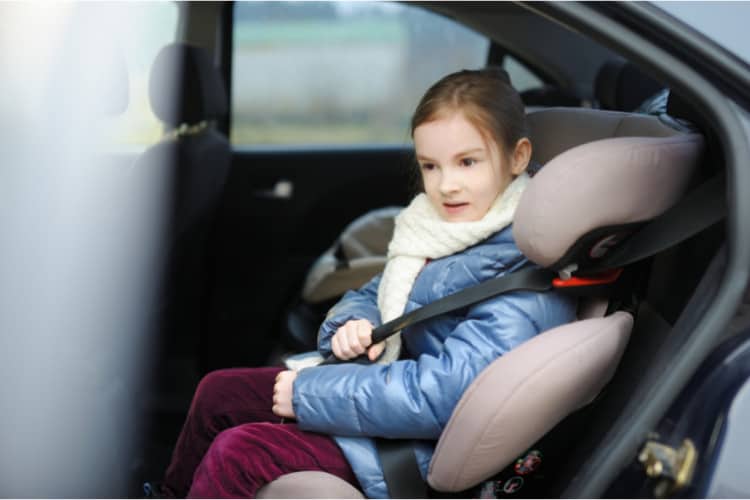
Shopping for a Booster Seat
A good booster car seat can be expensive. However, it’s worth the peace of mind to know that your child is safe. Look for deals like free shipping to help save on a quality booster that will last. Keep your eye out for sales on reliable brands like Evenflo, Maxi-Cosi’s Rodifix, Graco Tranzitions or highback TurboBooster, and the Chicco KidFit.




